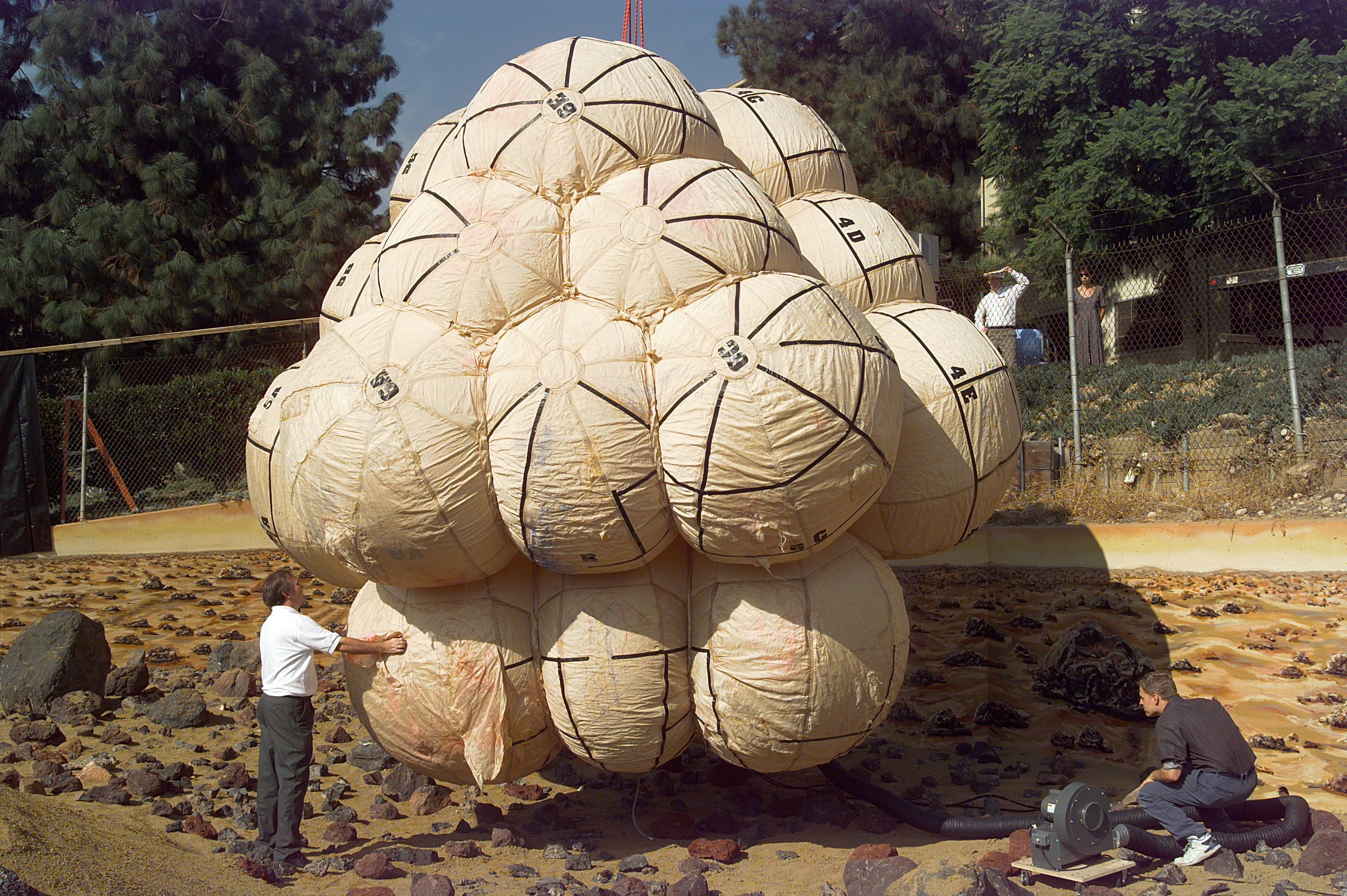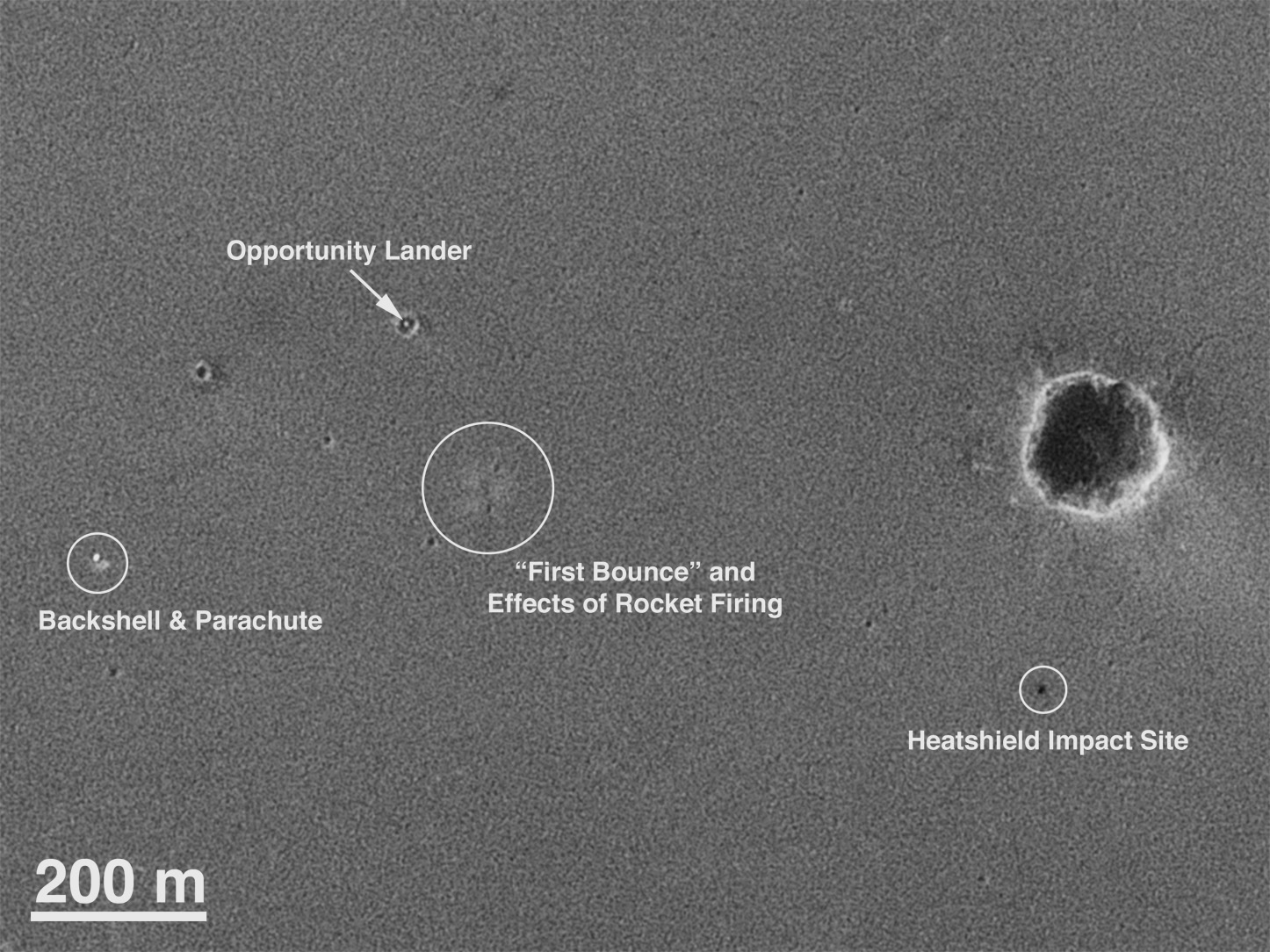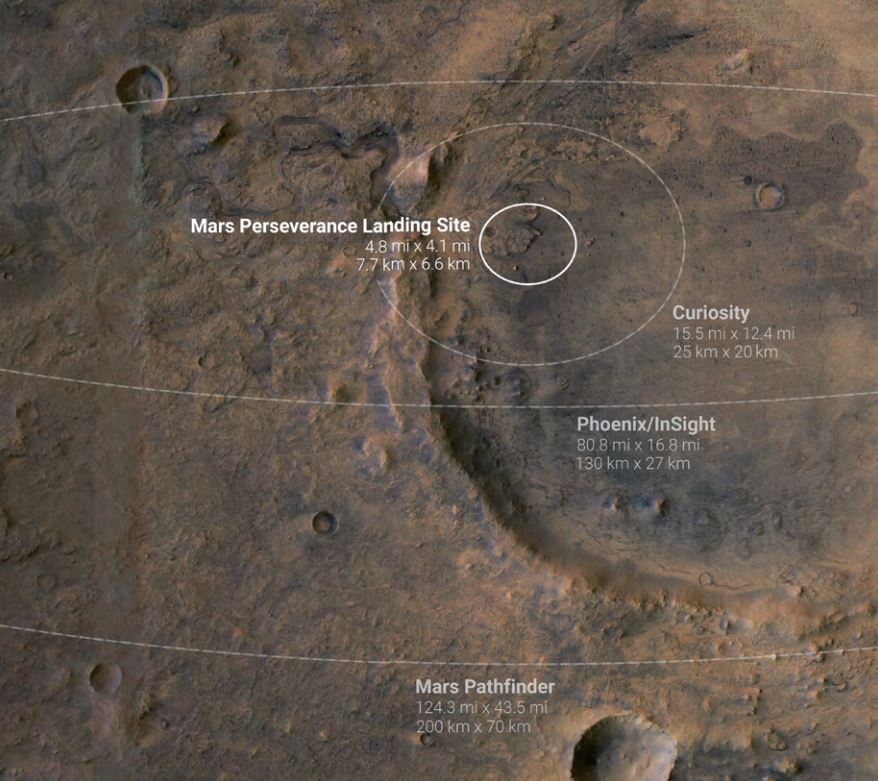Here's how NASA will safely land a $2.7 billion rhino-sized rover in a dangerous Martian crater
Nothing like this has ever been done before.

When NASA's $2.7 billion Perseverance rover plunges like a meteor into the Martian atmosphere on Thursday (Feb. 18), it will put on a show unlike any before in the five-decade history of Red Planet exploration.
NASA is attempting to land the 2,260-pound (1,025 kilograms) nuclear-powered life-hunting robot — which will be moving at 12,100 mph (19,500 kph) when it smacks into the Martian atmosphere on Feb 18. — with unheard-of precision in an area of particularly treacherous terrain. To pull this off, the agency has designed an all-new system to safely deposit the rover on the surface, which will include turning the descent vehicle into a smart robotic pilot that will aim itself at a narrow target zone, scan the surface for dangers while moving at high speed, and — if all goes according to plan — guide itself to flat ground that won't damage the machine upon landing. And the whole undertaking will be filmed and beamed back to Earth for the public's viewing pleasure.
Related: Photo tour of Jezero Crater: Here's where Perseverance will land on Mars
Mars landings are always dramatic. Probes from Earth, as Live Science previously reported, arrive at the speed of asteroids orbiting the sun, and they impact the Martian atmosphere at meteoric velocities. Pathfinder, the tiny robotic spacecraft that brought the first successful rover Sojourner to the Red Planet in 1997, survived the final stage of its descent in a cocoon of airbags, each as thick as an elephant. A similar cocoon helped deposit the much bigger and more advanced Opportunity rover on Mars in one piece in 2004. The Soviet Union, which first attempted to put a rover on Mars in 1971, relied on parachutes and foam. That spacecraft, named Mars 2, was destroyed upon landing.
Book of Mars: $22.99 at Magazines Direct
Within 148 pages, explore the mysteries of Mars. With the latest generation of rovers, landers and orbiters heading to the Red Planet, we're discovering even more of this world's secrets than ever before. Find out about its landscape and formation, discover the truth about water on Mars and the search for life, and explore the possibility that the fourth rock from the sun may one day be our next home.

All previous rover descents to Mars have targeted relatively wide, flat areas due to the inherent imprecision of a descent at extreme speeds followed by a period of careening around in a high-tech bounce house.

But Perseverance was built to hunt for signs of life in the ancient river delta, dunes and boulder fields within the 28-mile-wide (45 kilometers) Jezero crater. Imprecision isn't an option. Curiosity made the most precise landing in Mars history so far, and its landing zone was much wider than the one Perseverance is targeting. If Perseverance were to be as sloppy in its landing precision as Curiosity was, the rover could smash to bits against the side of a crater wall or wind up outside the crater, in a location where it might be difficult or impossible to reach its intended destination due to terrain.
So as soon as Perseverance hits the atmosphere, cocooned by a heat shield, small rockets on its back will begin firing to adjust the angle of the heat shield. Those changes in angle will allow the system to guide itself through the Martian atmosphere like a superheated, rapidly-descending, way-too-heavy hang-glider.
Sign up for the Live Science daily newsletter now
Get the world’s most fascinating discoveries delivered straight to your inbox.
It will be the first stage of a process of unprecedented complexity, guided entirely by computers on board the lander. With the long delay in signals between Mars and Earth, human piloting isn't an option. NASA won't even know whether the landing succeeded until minutes after Perseverance has (one way or another) reached the surface.

Related: 5 Mars myths and misconceptions
But NASA has used that guided descent technology before. To achieve a new level of precision with such a big vehicle, Perseverance will try to pull off two never-before-attempted tricks during its high-speed descent.
First, it will time the deployment of its parachute based on its position relative to its landing site, deploying the 70.5-foot-diameter (21.5 meters) fabric at the moment it calculates would make it most likely to reach its target.
Second, it will pop off its heat shield right after the parachute deploys and use radar and visual cameras to study the ground below as the parachute slows its plunge from 940 mph (1,512 km/h) to 190 mph (306 km/h) in two minutes. An internal computer will rapidly map the region toward which the rover is falling and pick a landing spot.
Then, just 6,900 feet (2,100 m) above the surface, Perseverance will pop off its parachute, and a rocket-powered descent vehicle will handle the rest of the journey. Using variable thrusters located on the four corners of the vehicle, it will fire those rockets to navigate toward the landing spot chosen by the computers. If all goes well, the descent vehicle should have plenty of leeway: According to NASA, the vehicle can shift the rover's position by up to 2,000 horizontal feet (600 m) if necessary in the final moments before landing.
Related: Here's every spaceship that's ever carried an astronaut into orbit
Those rockets' last job will be to bring the rover to a complete halt 65 feet (20 m) above the ground, hovering while the descent vehicle lowers the rover (and a small helicopter along for the ride) to the ground using long cables. The descent vehicle will use the last of its fuel to fly away from its precious cargo for a crash landing.
While all this happens, the rover will send little signals back to NASA to let the agency know how the descent is going. Those signals will arrive on a 15-minute delay due to the speed of light and the processing time of the Mars Reconnaissance Orbiter, a NASA satellite that will act as a relay according to the agency. It will likely take up to a week before the rover uploads video of the descent (which should include an audio recording) to watch back on Earth.
Originally published on Live Science.











